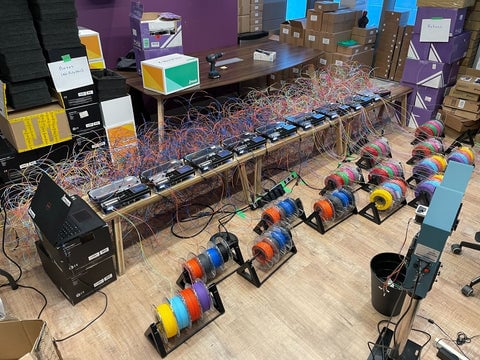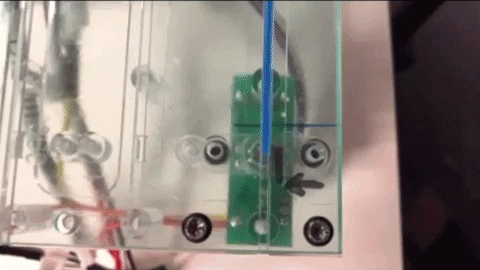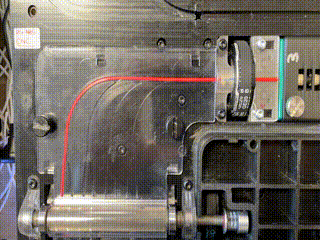Hi Everyone,
It's been an incredible few months since the launch of our new product line - as we move towards delivering Palette 3/Pro, Element and Array, we wanted to take a moment to update you on our progress and what to expect moving forward.
This update will focus on Palette 3 and Palette 3 Pro and we’ll work to give you an understanding of the testing processes, manufacturing process and product’s current status.
Our goal with the Palette 3 product line is to give you the most reliable, simple and friendly experience possible. This goal means our team has gone through an incredible amount of testing and validation for each product system, as well as the system as a whole.
Before product launch in March, the core systems were validated based on key performance metrics - this validation gave us the go ahead to move to pre-sales as well as manufacturing.
We want to be transparent and let our community know that we have experienced a few issues when moving into the mass manufacturing stage. Due to COVID restrictions, we have been managing the manufacturing process remotely.
This remote nature, in combination with challenges that showed up due to a switch from prototyping methods to mass manufacturing methods, have caused us to experience an expected 60-75 day delay. This means that air shipped units are now due to arrive in September 2021, and ocean units in November 2021.
This delay is a direct result of our decision to prioritize product quality, reliability and user experience. We know that a small shift in shipping timelines will result in a better experience for you, and have made the decision to prioritize quality.
We always do our best to set realistic timelines and goals, when we are not able to hit these timelines our next step is to communicate the change in timeline as well as the cause of this change, and the thought process behind it.
The rest of this post was created to help you understand the validation process that Palette 3/Pro went through before our launch in March, as well as the root cause of the issues behind this delay.
One of our goals with these updates is to allow you to understand what is happening behind the scenes with your product, with that in mind some of the following information will be a bit technical in nature.
We also know there are lots of you who really appreciate the technology inside Palette and we’re always happy to give you a bit of a peek behind the scenes.
We apologize as we believe this post is overdue; our team wanted to validate a key risk area (material wear, covered below) before sharing a new timeline publicly as we wanted to ensure that we have conviction and high certainty of hitting the new delivery timelines.
Validation Before Launch and Mass Manufacturing
Below is a quick overview of the performance metrics that have been tested and validated:
- Splice Core Tube Life: Our updated algorithm and cooling approach to splicing has increased the lifetime of Palette 3/Pro splice tubes from ~5k splices to over 10k splices (and in some cases, up to 15k) per tube. This means fewer failures due to tube jams when compared to Palette 2/S. These results came as a result of a complex multivariable analysis conducted over 6 months that helped hone in on this step change in performance.
- Switch Testing: Our updated limit switch design has us moving towards custom components, as opposed to off the shelf solutions. These limit switches have been tested to millions of trigger cycles, meaning that the switches should be significantly more reliable than previous iterations.
- Substructure Wear: The part of Palette which holds the filament channels, and has the motors and main parts bolted to it is known as the substructure. The substructure is a crucial component of Palette, and our team ran a number of wear tests to ensure the substructure would stand up to kilometers (or miles for the Americans) of filament being passed through each part of the system. Our engineering team designed accelerated life tests in order to simulate years of usage in a short amount of time. The results of these tests have led to multiple design improvements to fortify the system for robustness and lifetime consistency.
- Thermal Testing: Part of Palette’s ability to perform consistently and with improved speeds over prior generations comes down to the thermals. Through careful analysis and iteration we have been able to achieve a considerable increase in consistency from Palette to Palette in terms of the splice core’s heat output. With 2 extra fans over Palette 2/s we have been able to ensure the system temperature is more stable and that splices cool more consistently. Stress tests have been conducted to monitor the systems thermal performance during grueling run conditions and to ensure system performance remains constant.
These are just 4 of the primary system level testing areas and only scratch the surface of the full scope of the engineering validation and lifecycle testing conducted on Palette 3. We could not be more confident in the design of Palette 3/Pro, and that it will be a top performer and a community favorite.
Below, you can see a few examples of the tests that were completed before giving the go ahead for manufacturing Palette 3 and 3 Pro at scale:

Endurance test for splicing, featuring 9 Palette 3 Pro units, as well as our filament diameter measurement tool (motorized laser micrometer) in the bottom right. Over the course of these tests, Palette 3 Pros would be run for days on end, and sections of splices would be spot tested using the laser micrometer tool to ensure in-spec splices.

Above you can see a video of our switch endurance testing, these switches were triggered over 1M times (10x more than expected lifetime usage) in order to ensure they would not fail in regular operation.

This test illustrates our cutter endurance test, which ensures that our cutter system will be able to cut material reliably tens of thousands of times with no issues.
The tests above were performed in Toronto before the shift to mass manufacturing at our overseas facility. These tests (among dozens of others) validated that the design was sound and we gave the go ahead for launch, and manufacturing at scale.
Manufacturing in 2021
Our manufacturing process normally includes Mosaic engineers relocating to our manufacturing facility overseas in order to guide the process in a very hands-on way. For those who have never manufactured a product at scale, every component, part and process must be validated in order to ensure a smooth operation.
As we scale up from making batches of 10 Palettes to 10,000 Palettes, this process is critical to ensuring that performance and quality are consistent across all units. This is one of our strong suits at Mosaic, having achieved <0.1% reported manufacturing defects across our entire Palette 2 production.
Due to COVID restrictions, our team had the additional challenge this time around of running this process remotely. This meant that we needed to rely on our partners on the ground to validate key components, and send these components to our Toronto team for the final sign off. Given this new process we added significant additional lead time to our estimates, and were able to move through validation of key components while sticking to our planned schedule.
As of today, with the exception of one, all components and subsystems have been validated and secured for mass manufacturing. Given the scope and complexity of the bill of materials for Palette 3/Pro, and rigorous quality process that had to be built out in our production facility, this is truly a massive feat. The Palette 3 team has put in an incredible amount of hard work to get to this point and has gotten over hurdle after hurdle to bring Palette 3 to life at scale.
That said, Palette production can only ramp up when every single part is validated. The final component, and the key cause for the new shipping schedule, is unexpected wear on our injection molded substructure.
Substructure Wear
We referenced above that our team completed significant testing on component wear, this testing included lifetime wear testing on our substructure component. When doing testing at this stage, we test a sample size of around 10 units, made out of the same material that we plan to use in mass manufacturing.
The biggest difference is the manufacturing process - the sample testing is done on units that are CNC machined, whereas in mass production the units are made via injection molding.
With injection molding, it takes around 2 months from the initial sign off on design, to getting your first run of molded parts. We received this first run in May and began validating the parts against our lifetime wear indicators. It became clear a few weeks back that the injection molded substructures were not performing as expected.
These substructure units were exhibiting additional wear earlier in their life cycle than the CNC units, causing them to not hit our wear indicators. This premature wear would lead to filament slipping off of bearings, and being unable to drive and splice properly.
After conducting a thorough investigation first considering geometric issues, the cause of the premature wear was concluded to be solely related to material composition. Even though the material type is the same between the CNC samples and Injection molded samples, the material grade that was sourced for the injection molding samples (i.e. a moldable grade) has a different hardness than the CNC material (i.e. an extruded grade).
This change in hardness means the filament can more easily wear down the channel in the injection molded version, leading to filament slipping off of the bearing and not driving properly.
After an in-depth investigation of different material specs we have sourced materials that have increased hardness ratings and wear resistance. This short list of materials are being tested and validated, after which we will move into the mass manufacturing stage.
Our partners have already begun validating the remainder of the manufacturing process, as well as our in-line QC processes, assembly processes and packaging processes. We are confident that once we resolve and validate this final modification that we will be in a great position to scale manufacturing and hit the delivery timelines.

- Pictures of our Palette 3 Pro Pilot run, being completed in order to work out any other potential bottlenecks in the manufacturing process and workflow
The Silver Lining
The updated hardware timeline above will give our firmware and software teams additional time to simplify workflows, complete further testing, and generally push to give you the best experience possible.
We have more resources dedicated to these teams than we ever have in the past and are incredibly confident that you will have an amazing out of the box experience with Palette 3 and Palette 3 Pro.
In addition to the above, our customer success and community teams are using this extra time to focus on creating more printer specific documentation, walkthroughs and setup guides.
Conclusion
We hope the above sheds light on not only what to expect from us moving forward, but also insight into the root cause, as well as our decision making processes.
We welcome any questions or comments you may have about this update, please reach out to our team at support@mosaicmfg.com and we will be in touch as soon as possible. We typically reply within 24 hours, but please allow our team a bit of additional time as there will likely be more requests than a normal week.
Based on our commitment to quality and our high level of testing we needed to make the challenging decision to delay shipments but ultimately quality reliability and user experience remain the top priority over timelines.
We know everyone is excited to get their hands on Palette 3/Pro as soon as possible - please know that our team is working overtime to bring your product to you as quickly as possible.

.png?width=368&height=307&name=Blog%20Featured%20Images%20(600%20%C3%97%20500%20px).png)